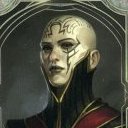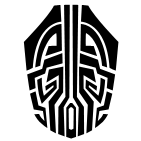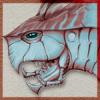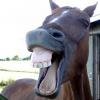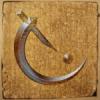Search the Community
Showing results for tags 'spiritual'.
-
Connection Theory: I have started watching the Shardcasts, and there seems to be a lot of -opinions- floating around. I wanted to make a comprehensive theory for my own benefit. I also wanted to work through these examples with hypothetical examples so that there is fewer miscommunications. Terms: This will be where I keep track of Cosmere related terms. Some may not come up, but this is how I've started referring to them within myself. Since differentiating between certain things (mostly Investiture) can get contrived if these things aren't referred to distinctly. Investment: The Apparatus of a soul that puts Investiture to use. Investiture: Magic "Stuff", alternate form of matter and energy. Invested: An entity containing -more- Investiture. Connection: Any link between two perceivable entities. Identity: Spiritweb vibrations that denote separation between the many connections of the web. Base concepts: Connection Types as they pertain to people: Personal: This influence how open to this person's ideas you are, and how likely you are to forgive/accept differences in that person. Land: This influences your feeling of 'home' or comfort and your desire to help/defend/improve that loci. Time: This influences your physical age, recollection, and "Destiny." Items: This influences the items cognitive presence, and can even cause that object to take on a person's identity. In every referenced instance of connection, we presume that connection matters most and moves through the Spiritweb from one identity set to another, and that is as far as impact is made. However, I would posit, that having a STRONG connection to one identity requires weaker connections with -many- things. I do not think a basic connection to a person gives you the ability to speak their language. I think it influences your predisposition for -maybe- -someday- deciding to speak that language, and you have to actively seek out those other connections. HOWEVER, a strong enough connection developed sincerely and over time, will establish those connections to the necessary sources so that language is shared. Example: An English speaker marries a non-English speaker...eventually they begin to form some manner of understanding between them. Which way does Connection work do you suppose? Does person X developing a STRONG connection to person Y give them connections to the connections making up person Y's identity, or does that strong connection to person Y give person X limited access to person Y's connections. I believe the connections should link to Person X, because only that which is denoted on -your- Spiritweb changes you, or connection matters about how far away from the entity in question you are, but that implies movement itself, which is also problematic in a locations don't exist way. I also believe that all things begin with connections to each other. They all have connections to the same three planes of existence. They are all composed of Investiture of the Shards, and all the Shards began as Adonalsium. If everything exists in the spiritual world as a super position, and only the way it happens is always the way it will have had happened....then all things being cosmerologically entangled makes sense...more than not. This will matter much more as "Fortune" comes into play. This is relevant because it shows us how all things -could be- connected, and when strengthening connections that there is no web movement, necessary. Unexplored Ideas and Questions: Connection to Abstracts: Do you believe that the Shards are "Connected" to the abstracts that compose their intent? Do you believe that a person can be "Connected" to the concept of "Honor" or "Evil?" Non-Conscious Connections: Can two objects become so linked that they become one identity? Would this have physical effects, necessarily? For instance, a set of marbles could have been stored together so long that it thinks of itself as the whole of the set, rather than each individual marble. Presume they're made out of metal... If part of the set were pushed would it move the entirety of the set? (I don't think so, I think they are a set whilst stored, and become individuals when apart, just by virtue of how human understanding works.) If a man had a wooden leg for so long that it -became- part his identity...would spiritual healing repair the broken wood? USING Connection: Spiritual Adhesion: I would assert that this STRONG connection to a person, presented by Dalinar, makes many weaker connections to other entities which are important to the beings "Identity." He will have or use connections to the person, homeland, family, and friends to a much weaker extent while the 'faux-connection' lasts. Allowing for 'native-speaker' type speech. Era 2 Medallion: The connection is established with the land rather than a person. This MODERATE connection to the land overwrites your own connections to your own land, and provides weak connections to more things (the people of that land) which is enough weak connections to provide to speak the language filtered through your own identity, thus retaining your accent. This will differ for a "Connection" Ferring, as it will *swap* their connection for their home with the connection they are tapping to make language, allowing them to speak as a native speaker. The accent is a side effect from using investiture filtered through an "Identity"-resonance that is not their own. (Lower case r resonance) Edit Log: Swapped Investiture and Investment Definitions.
- 7 replies
-
1
-
- realmatics
- connection
-
(and 2 more)
Tagged with:
-
I think I have a theory as to how shards work. I'm sure this has been spoken about, but I don't know where. Shards, blades specifically, are solid stormlight/investiture. Spren can become shardblades, and the common theory as to shardplate is that spren form it, like by Kaladin, windspren by the hundreds surrounded him. Spren are bits of stormlight/investiture given sentience. Therefore, Shards are stormlight. They could cut, I suppose, by separating the sould of the object, but I think Brandon mentioned it in one of the the books. Shardblades can be summoned because of the sentience. It would explain why shardplate cannot be summoned and dismissed - there is no sentience. Because that's the only difference between the two. In theory, then, if one could find a way to make stormlight solid, one could make virtually indestructable objects.
-
Hello! While I was doing scripture study, (I'm LDS) something huge hit me! I realized that in Doctrine and Covenants 130, it has a lot of things that are extremely reminiscent of things seen in Oathbringer. For example, it mentions in verse seven a "sea of glass and fire." This sounds exactly like the cognitive realm, where the sea was made of glass beads (objects) and fire (souls). This was very peculiar to me, but connections go even deeper. Take verse eight for instance "The place where God resides is a great Urim and Thummim" In Hebrew, Urim and Thummim means "light and perfections." This blew my mind, because the spiritual realm is where stormlight comes from and where everything is the perfect version of itself. These are the only connections I've made so far, but I think there might be more. I really like this stuff and it gets me really excited! Does anyone else have any ideas about other connections to LDS or thoughts?
-
From the album: Stormlight By Jemma
"Unite Them!" Dalinar Kholin. This is a scene that takes place in Oathbringer . On the left is the cognitive realm Shadesmar, the center represents the physical realm, and the right is the spiritual realm. There's no real description of the spiritual realm, but in the world of the Cosmere, it's the breaking spirit that allows the investiture of magic. As such, I decided to represent it by shattering as it reflects Dalinar's broken--but undefeated spirit. This was a blast to work on and I'm glad I was able to find the time to finish it!- 9 comments
-
28
-
Just a little theory. Ever since Dalinar used Spiritual Adhesion, I've been wondering what other surges might have multi-realm applications. This is the most interesting thing I've come up with. What if there's a Spiritual Gravitation? Gravity is a fundamental law of the cosmere, so it's ultimately rooted in the spiritual realm. An object's gravitational properties are encoded on the spiritual level. I think the gravitational Lashings we've seen (from Kaladin, Szeth, and Skybreakers) are a physical phenomenon. They can defy or interfere with an object's natural gravity, but they cannot actually change it. When the Lashing runs out of stormlight, the object reverts to its spiritually-defined normal state. Realmatically speaking, you might say these lashings are only skin-deep. Spiritual Gravitation would go deeper. A Spiritual Lashing would actually alter an object's gravitation on the spiritual level, permanently changing its nature. This would be a one-time procedure, like soulcasting. It would not require stormlight to maintain. This, I propose, is how greatshells grow so large. Their spren provide spiritual Lashings that permanently reduce their weight. That's why they don't seem to use stormlight the way radiants do. This is also how the Fused can continuously fly. They are perma-Lashed to (I assume) zero or near-zero weight. They use normal physical Lashings to maneuver, but they do not require stormlight, voidlight, or any investiture fuel to maintain levitation. When they read books while floating in the air, it looks to us like a frivolous waste of investiture, but I think it's actually conserving investiture. They don't use any fuel to float, but they would need fuel to lash themselves downward and sit in chairs. As these two examples suggest, Spiritual Lashings might require a gemheart. It's possible that, in lieu of investiture-fuel, these Lashings rely on a certain kind of spren-bond to retain their permanence, and it's the kind that only gemhearts can provide. This is a bit out there, but if you could apply one of these spiritual perma-Lashings to an inanimate object, that would be a great way to build floating cities.
- 8 replies
-
5
-
- theory
- surgebinging
-
(and 1 more)
Tagged with:
-
For some months now, I’ve been working on creating a framework for all of the magic systems of Roshar that combines everything we know about them and makes predictions for that which we don’t know. This topic is the end result. Since I’m aiming for completeness, there will be things here that are already well understood, as well as things that I haven’t seen proposed before. So, with apologies for the sheer length that it has become, allow me to present my framework. Magics by Shardic Composition Let's start by listing the various Rosharan powers and classifying them by the Shards which power them. Magic Shardic Composition Surgebinding Honour & Cultivation Ancient Fabrials Honour & Cultivation Modern Fabrials Cultivation Old Magic Cultivation Voidbinding Honour & Odium Voidbringer Powers Cultivation & Odium Surgebinding My classification of Surgebinding shouldn't be raising any eyebrows since it is well understood that each type of Radiant spren is some mix of both Honour and Cultivation. However, let's take a moment to consider how the two powers manifest in Surgebinding as this will provide insight into how I've classified the other magics. While there are many different interpretations of honour, they ultimately all come down to the interaction between two or more people: in a universe with only one person, it would be impossible for them to act honourably (nor to act dishonourably), for there would be no one for them to act honourably towards. This duality is reflected, I believe, in Honour's magic. The most obvious example of this would be the necessity to bond spren in order to perform it. Now, you could argue that since the listeners were bonding spren long before the Shards came to Roshar, this would mean that bonding spren is not related to Honour specifically. However, the listener bond is, by its very nature, very different to the Nahel bond; seemingly less a mutually beneficial partnership, and more a natural process. I would contend, therefore, that this is an example of Honour incorporating this aspect of the Rosharan environment into his magic out of necessity. I do not think that this idea of duality is limited only to the bonding of spren, however; I think that it extends even to the way that the powers form. You likely noticed that in my listing of the various magics that there is no system that is entirely of Honour. I think that Honour's nature means that he requires a second Shard to mix his power with in order to form a magic system. In other words, it would not be in his nature to form a magic that is purely his own. Another example of Honour's effect on Surgebinding is in its structure: the way that Surgebinders are divided up precisely into distinct predetermined Radiant Orders based off of their interpretation of honour, and their determination to emulate that ideal. And also, the way that the powers are divided up between the different orders. This is a rigid and inflexible framework, much like the Radiant’s Ideals can be. In short, this is where the "binding" in Surgebinding comes from: Honour is bound to another Shard and the Radiants to their spren, their Orders, and their Ideals. So if Honour provides a structure to Surgebinding, what does Cultivation provide? I think that it is through Cultivation that Surgebinders get to manipulate the Surges. If we look at the spren associated with each of the Shards, Honour's spren are those of emotion, again linking back to human interaction. Cultivation's spren, however, are the spren of nature, so it makes sense that it is Cultivation's power that gives access to the natural Surges. Now, I can imagine it being argued that since on Scadrial, all the magic systems revolve around metals, surely all the magic systems of Roshar should likewise revolve around the Surges, not simply the ones associated with Cultivation. However, I would argue that this is a false analogy: the metals on Scadrial act as a focus, the Surges on Roshar do not. The powers produced by the Metallic Arts (with the exceptions of Allomantic iron, steel, aluminium, and chromium) are not related to metal themselves. Therefore, whilst all of the Rosharan magic systems should share a common focus, it should not necessarily be the case that they all share the Surges. Modern Fabrials Now with that established, it should be obvious why I think that Fabrials are a magic system purely of Cultivation. They lack the rigid structure that I have associated with Honour, and while the spren are still part of the magic, they are trapped inside the gemstones rather than working with the user as you would expect in Honour’s magic. This leaves Cultivation as the only reasonable candidate, which in turn means that they must be utilising the surges in some way. Although, without the rigidity of Honour’s framework, the way they manifest is apparently quite different. Ancient Fabrials The first thing to note here is that these fabrials do not seem to have much in common with modern fabrials, to the point that I suspect that calling them fabrials at all is a misnomer. Modern fabrials all function by trapping a spren in a gemstone, ancient fabrials do not appear to do this. Spren are clearly involved in some way, just as they are in every other magic; we in fact see this in the operation of the Oathgates. In order to activate them, you need a Shardblade, i.e. the physical manifestation of a spren that is part Cultivation and part Honour. Moreover, the spren needs to be alive. This implies that the person operating the Oathgate needs to be working together with the spren, which sounds just like an Honour based magic. This would mean that the ancient fabrials are far more closely related to the Surgebindings than they are to modern fabrials. Which makes sense given that the effects we have seen (Soulcasting, Regrowth, Transportation) appear to be the same as various Surgebindings. In fact, when Nale heals Szeth with one of these ancient fabrials, he actually refers to it as a Surgebinding. Ideally I would compare the operation of the Oathgates to that of other ancient fabrials, unfortunately though, we haven’t really seen enough of these yet to be able to draw anything meaningful from them. The Old Magic This isn’t a magic like others on this list: it's not something that people can perform; instead, it seems to be practised solely by the Nightwatcher, about whom the only things we can really say with confidence are that she is some kind of “mega-spren”, closely related to Cultivation. This would suggest then that the Old Magic can be described as similar to a sapient, self-operating fabrial. I don’t think that there’s much more that can be said at this point without additional information about the Old Magic or the Nightwatcher. Voidbinding This brings us to the only magic system on the list which I believe to be unrelated to Cultivation. If we look at the Voidbinding chart from the back of The Way of Kings, it is immediately obvious that the structure of the magic is the same as Surgebinding. It even has "binding" in its name, hence why I think that it is of Honour. However, if we look at the symbols where, on the Surgebinding chart, the Surges are placed, we see not the symbols for the Surges, but a twisted version of them. Hence I do not think that Voidbinding will be related to the Surges at all, and hence Cultivation has no part in Voidbinding. Voidbringer Powers And finally, we come to the powers that were demonstrated at the end of Words of Radiance by the Voidbringers. Why do I think that this isn't Voidbinding? We have a WoB that we haven't seen Voidbinding yet, but we have seen these powers, therefore they must be something different. Additionally we have the following WoBs: Since the Voidbringers are forms of the Parshendi, and the Parshendi are not of Honour, if my classification of Voidbinding as being of Honour is correct, then the Voidbringers cannot be Voidbinders. So, why do I think that the Voidbringers are related to Cultivation rather than purely of Odium? If we have a look at Dalinar’s vision of the Purelake, we see him looking for a voidspren, which ultimately ends up animating a thunderclast. The voidspren is described to him as: “A spren that doesn’t act like it should”, not as a new type of spren. And apparently this is a result of the spren interacting with Sja-anat, an Unmade. What’s more, the spren they end up chasing has a resemblance to a riverspren, a type of nature spren, which is therefore related to Cultivation. I would propose, therefore, that the Unmade corrupt spren to make voidspren. When the spren was originally of Cultivation they go on to form Voidbringers and thunderclasts and the like. And when the spren was originally of Honour, they will bond to form Voidbinders. On Initiation The first thing to note here is that not all magics require an Initiation in order to be used. Some, such as Haemalurgy, are universal and can be used by anyone. Modern fabrials also seem to fall under this category. In order to use a magic, you need three things: intent, Investiture, and a focus. In the case of fabrials, the Investiture and the focus are both incorporated into the device itself. In other words, the user only needs to provide the intent to use the fabrial in order for it to work. The crucial part here is that the user does not need to access an external source of Investiture themselves: the fabrial does that for them. The Old Magic is not relevant to this discussion since it is restricted to the domain of the Nightwatcher. Also, I don’t think we’ve seen enough of the ancient fabrials yet in order to determine whether they would also be universal or not, so, for the time being, I’ll pass over these two magics. The remaining magics all seem to require Initiation. Khriss’ comments on Initiation in Elantris’ Ars Arcanum suggest that the method of Initiation across all of the magics on any given world is consistent. I think it should be fairly obvious, therefore, that the method of Initiation here is the spren bond. All of the remaining magics utilise a spren bond in some form, and Syl has openly admitted to Kaladin that she is the reason that he is able to Surgebind. On the Rosharan Focus So far I’ve seen theories on the focus claim that it’s either the gemstones, or the spren, or the spren bond. Firstly, I don’t think that it can be the spren bond: I have already demonstrated that it is the method of Initiation and I don’t see how it can be both. Also, as previously noted, not all magics require a spren bond, but all magics require a focus which is consistent across all Rosharan magics, therefore if the spren bond were the focus, this would be a contradiction. Things get interesting when we start to examine the spren and the gemstones as candidates for the focus, however. When examining Soulcasting, the gemstones act exactly as you would expect the focus to, the type of gemstone used determines the result of the transformation. However, this does not appear to be the case with any other magic that we have seen, which should mean that the gemstones can’t be the focus. The spren seem like an ideal candidate for the focus since they are, like the gemstones, present in some capacity in all Rosharan magics. Moreover, as they are capable of changing their form at will, if they are the focus then they should be able to direct the form that the power takes by themselves. And, we saw in the climax to Words of Radiance, Syl was able to accurately determine the weapon that Kalaldin wished her to form without him having to actively communicate it to her, it would follow then, that the Radiant spren could do the same thing to provide their Radiant with the power that they wished to use. And since in modern fabrials, the spren would presumably be trapped in a single form, it would account for why fabrials each have only a single function. There is, however, a problem with using spren as the Rosharan focus, and it is essentially the same problem that we ran into when we tried considering the gemstones as the focus: when considering Soulcasting, it is clearly the gemstones, not the spren that is determining the result of the transformation. So both the spren and the gemstones must be the focus, but neither the spren nor the gemstones can be the focus! To resolve this, I think we’re going to need to take a closer look at what a focus actually is. To start off with, I don’t think that a focus is actually physical. Everything in the Cosmere exists to some extent across all three Realms, so that we might be able to see or interact with it in the Physical Realm does not mean that this is where the magical interaction is happening. If we look at AonDor, the focus like in all Selish magics is shapes, however, an Aon will continue to function even if you were to destroy its physical representation. Indeed Elantrians can draw Aons in the air, which shouldn’t have a physical body at all. And of course, on Nalthis, they use Commands as a focus which, being auditory, likewise shouldn’t have a physical body. I suspect that it is in the Cognitive Realm that these gain a more concrete, not to mention, permanent, form. So, Investiture flows from the Spiritual Realm to the Cognitive Realm where it interacts with the focus and is filtered down into the Physical Realm in the form determined by that focus. But, if the focus is cognitive, then shouldn’t it be possible for it to be something more abstract in nature, such as a function? We know that gemstones and spren have some kind of relationship with each other. Just consider Navani’s notebook: Could it be the case that spren and gemstones are bound together as variables in a cognitive function that is acting as the focus on Roshar? When spren are imprisoned in gemstones, is that what’s really happening, or are they instead being constrained to the same space as part of such a function? This is what I think is happening here: neither the spren nor the gemstone is the focus, but they are both components in a kind of complex focus. How the Honourblades Work So, I’ve been repeatedly coming back to the idea that the spren are involved in some way in every magic on Roshar, yet you might have noticed that the Honourblades are an exception to this. They allow their wielder to Surgebind, but they are not themselves spren. In fact, originally, the Honourblades would power Surgebinding by opening a direct conduit to Honour, similar to how Allomancy opens a conduit to Preservation, meaning that even gemstones wouldn’t be needed to provide Stormlight. Thus, the Heralds might not have needed either part of the focus that I specified above. Does this not contradict my argument for the focus? I don’t think so; I think that the way Honour hacked the magic in the Honourblades means that this isn’t an issue. When Preservation hacked Allomancy so that Vin was able to burn the mists, she no longer needed the metals for Allomancy. And similarly, when Vin became Preservation, she was able to power Allomancy for Elend without him having access to the metals. Based off of this, I think it’s clear that a focus is not required when a Shard directly intervenes like this. One final point: it could perhaps be argued that the Honourblades represent the true form of Surgebinding and that the Nahel bond is the true hack since the spren copied the Honourblades. I disagree with this interpretation, though. I think that the Radiant spren have always been able to form the Nahel bond and create Surgebinders since Honour first Invested in Roshar, they simply didn’t know that they could do this. When Honour hacked the system by creating the Honourblades though, the spren were able to figure out that they had this ability from seeing what the Honourblades could do. TL;DR Given the size and scope of this treatise, it is impossible to easily summarise the entire piece, however, a few key points are as follows: Honour’s influence causes a magic to take on a predefined, rigid structure. Voidbinding does not manipulate the Surges at all. Spren Bonds are the basis for Initiation. Roshar has a complex focus which utilises both spren and gemstones as components. The Honourblades negate the need for a focus.
- 42 replies
-
13
-
- realmatics
- spiritual
- (and 13 more)
-
I thought it would be fun to compile what we now know of investiture. Here’s the start of my list. I’m focusing on innate properties of investiture, not something investiture acquires from its interactions with Shardworlds and other Cosmere objects (other than its capacity to interact). I’d like us to focus on investiture itself, not the Realms. Spiritual Investiture “True” or “raw” investiture. Wants to be used. Has “mass” in the sense that its weight “compresses” the Realms. Is composed of the same substance no matter where located – like DNA subject to RNA’s code sequencing. Its structure changes over time based on new ideals and connections. Is capable of state change - conversion into Cognitive or Physical Investiture or matter or energy. Cognitive Investiture Consists of the merged minds of Shards and mortals. Its composition changes over time based on new thoughts and feelings. May also have compression “mass.” The mandate (intent) of each Shard inheres in its Cognitive Investiture (probably). Is capable of state change - conversion into Spiritual or Physical Investiture or matter or energy. Physical Investiture Can exist in any form of matter: solid, liquid or gas. Lies latent until its power is actuated by Cognitive Investiture. Is a shard’s “body.” Is capable of state change - conversion into Cognitive or Spiritual Investiture or matter or energy. Comments and additions?
- 1 reply
-
1
-
- investiture
- cognitive
-
(and 1 more)
Tagged with:
-
The Spiritual Realm is quite a mysterious place. It's the Realm of connections and ideals, and is the source of Investiture. The soul is also known as the spiritweb. But other than that, very little is known. What does it look like? Why is Hoid Spiritually blind? What exists within it, other than Investiture? What is Investiture, really? I don't know the answers to all of those questions, but I hope that my theory can help shed a little light on some of them - either by providing answers, or by highlighting how much we don't know. Be warned: I am unlikely to use many quotes or WoBs, as they have provided little information on this subject. If I'm lucky, I will at least raise the right sorts of questions so that we can learn more. So the first thing we need to do is examine the basic consequences of the things we know. The word "spiritweb", combined with the knowledge that the Spiritual Realm is the Realm of connections, provides an image of a tangle of connections. Each Spiritual entity is connected to certain others, and the amalgamation forms a being. Your spiritweb is composed of the connections between the entity which is essentially you, and the things around it - your relationships with other people, your connections to ideals, etc. But then things get more complicated. For example, consider Identity. What is it? Is it a separate Spiritual entity, some sort of identifier which marks the person as that person? That would be a bit contrived. It can't be the central element of the Spiritweb, because it can be stored Feruchemically. Is it an ideal, generated for each person? That seems unlikely. I think the most likely idea is that it represents the connection to the Cognitive entity for that person. And then we get into interactions with different Realms. The Cognitive and Spiritual Realms seem to interact quite a lot, but we know very little. Cognitive entities can apparently influence the Spiritual Realm to repair the Spiritweb, if given the right type of Investiture. This is how Feruchemical gold and Regrowth work. But Cognitive entities can also be modified by the Spiritual Realm and Investiture, especially through Hemalurgy. So things get more complicated. Plus, the Spiritual interacts with the Physical - this is how the laws of physics apparently work, and of course there are spiritwebs and so on. To go off on an apparently unrelated tangent, consider Allomantic steel. It uses Investiture to form an almost certainly Spiritual connection to nearby sources of metal, then makes the connection visible. It then allows for the modification of that connection, resulting in the Pushing of said metal. So you have to wonder, does this allow someone to see through the world into the realm beyond? Or does it simply make visible what was there all along? Is the Spiritual Realm a separate world in the same way as the Cognitive, or is it simply a different type of interaction, something embedded into the other worlds, able to go between them freely. Something in them, but not necessarily of them, without being a whole new world. What would the practical consequences be? First of all, there might not be such things are Spiritual entities. The Spiritual Realm could be composed entirely of connections. Instead of connecting the Spiritual entities associated with various parts of the person to the Spiritual entity associated with the person and the Cognitive entity associated with the person, it connects the Physical and Cognitive entities. This explains some apparent contradictions with ideals - for example, the ideal of beauty varies from place to place and from time to time, making it Cognitive. However, in this view, ideals are simply cognitive entities endowed with a higher level of Spiritual connection (or a higher level of Investiture). Spren represent this quite well, being ideals with enough Investiture to become sentient. Investiture, of course, is the basic substance of the Spiritual Realm, which presumably forms the connections. This is how magic works. Awakening involves binding an object to a Cognitive entity representing the desired behavior. Allomancy provides a connection to the metal which allows the user to draw on Preservation's Investiture, and then connects to something else - an external piece of metal, another person's mind, the senses, etc. Feruchemy draws off the connection to an attribute, then restores it with greater strength. Surgebinding forms a connection to the spren and the Surges - the laws of physics as endowed with extra Investiture and connected to Cognitive entities. All magic is based off of this connection. Having sufficient Innate Investiture also grants sentience, probably by forming a stronger connection with the associated Cognitive entity. This is how Hemalurgy grants Mistwraiths sentience - their Cognitive entity is quite similar to a human's, so Hemalurgy allows a strong enough connection to that for them to become kandra. It's also how spren become sentient - in the Cognitive Realm, everything has some degree of sentience, from ropes to rocks to sticks. Investiture allows for a stronger connection to the Physical aspect, granting sentience. When Nahel spren bond, that binds them even closer to the Physical Realm, making them fully sentient in both Realms. So. There you have it. My insane ravings on the Spiritual realm. What do you think?
- 8 replies
-
13
-
- realmatics
- spiritual
-
(and 1 more)
Tagged with:
-
So lately I’ve been fascinated with Realmatic Theory, and here are a few observations and speculations I’ve made. So far, canon Realmatic Theory tells us that the Cosmere is made up of three Realms: Physical, Spiritual, and Cognitive. All entities exist in the three Realms, but are manifest more strongly in one and are shadowed in the others. However, Brandon has noted that Sazed has not yet touched Heaven or Hell nor does he know what the final beyond contains. He has, however, made contact with some people who have been sticking around in something of a middle place. This very strongly implies that there are three realms; and I do not mean the Physical, Cognitive, and Spiritual Realms. Here is how I think of the three greater realms. Brandon’s nomenclature, which is almost certainly not canon, is in parenthesis.The Mortal Realm (Cosmere): This is the Realm we’re most familiar with. It is governed by Canon Realmatic Theory; namely, the Physical, Spiritual, and Cognitive Realm. This is the most relevant Realm as the vast majority of Cosmere stories take place almost exclusively here. Speculations: The interactions between the three Realms has been difficult to explain due to a lack of concrete, canon information. Even some of the canon information is suspect as it is the observations of in-world characters who are capable of being mistaken. So, without any supporting evidence, here are a few of my hypotheses. The Mortal Spiritual Realm allows for Investiture, which transcends the three Mortal Realms, to flow between the Divine Realm and the Mortal Realms. Adonalsium is described as being the, "Power of Creation," but isn't, to my knowledge, referred to as God. This is especially intriguing when you consider that the Cosmere takes place in a dwarf galaxy in a larger Universe. If Adonalsium was God, why would it choose to only be involved in a dwarf galaxy rather then being equally present throughout all of Creation? If Adonalsium is merely a tool of the Divine, then its exclusion from the rest of Creation isn't quite so unusual. Not to mention that the idea of humans literally destroying a God is absurd, even in the fantasy genre; misusing and breaking a portion of God's power, however, is plausible and makes for an interesting and compelling story. Brandon mentions both Heaven and Hell in the above quote. He has noted elsewhere that there was a Cosmic Force that opposed Adonalsium. If Adonalsium is a tool of Heaven, then it stands to reason that Adonalsium's opposite is the tool of Hell. Several real world religions explore the concept of Holy and Evil deities competing with each other via their mortal servants and followers. On Roshar, Tanavast suggests to Dalinar that he should attempt to force Odium into using a champion. Even in the Cosmere there is precedent for deific entities using mortals to settle disputes. This supports my hypotheis that the entities of the Divine Realm use the Mortal Realm, using the Mortal Spiritual Realm as a medium, as a battleground for their disputes. Perhaps the force that opposed Adonalsium influenced humanity enough to have them Shatter Adonalsium. The Divine Realm (Final Beyond): We have next to no exposure to this Realm. Brandon specifically mentions Heaven and Hell and refers to both together, in my interpretation of his quote, as the final beyond. This is the location of the afterlife. Speculations: This is likely where the truly significant, yet behind the scenes, conflicts are taking place. There is a Heaven and a Hell and there isn't a myth, legend, or religion in yhe real world that has a Heaven and Hell that are not in conflict with one another. It is also unusual for Holy and Evil to directly war with each other; they prefer to use mortals like a divine game of chess. Investiture transcends the Mortal Realms. Shards of Adonalsium are large, sentient pieces of Investiture. Shardic actions are determined by Intent. I've already proposed that the Mortal Spiritual Realm is the medium through which Investiture from the Divine Realm manifests. My hypothesis is that Investiture is a spectrum, much like the frequency of sound waves, and that different Intents fall on that spectrum. If you pluck a single string on a guitar and the string adjacent to it is tuned to the same note, the second string will vibrate from the soundwaves of the first while the other strings are unaffected. In this case, one string is in the Mortal Spiritual Realm and the other is in the Divine Realm. When Shards use Investiture in the Mortal Realm according to their Intent their Mortal Spiritual Intent reverberates in sync with Divine Investiture and energy can then flow from the Divine Realm to the Mortal Realm. Note to Self: come back and explain that better. Purgatory (Middle Place): Again, we have nearly no exposure to this Realm. This is where Kelsier waited to take up Preservations power. We know that you need strong ties to the Physical Realm in order to linger here. Speculations: This actually just plain baffles me. -------EDITS-------- Edit One: Improved formatting. Removed speculations from the end of the post. Edit Two: Added Speculations under the Mortal Realm, Divine Realm, and Purgatory.
-
Title says it all, really. I was wondering if the references to cutting off the 'spirit' of a limb and such are actually accurate, or if it is actually cognitive damage, as someone (can't remember who) theorized that it was, and thus Nalan brought back Szeth by reconnecting his Cognitive aspect to his physical one. If it is Spiritual, it brings up an interesting possibility: if a Compounding bloodmaker can heal Shardblade wounds, one type of Spiritual damage, then perhaps they can heal another type: Hemalurgy, thus creating an infinite source of Allomantic gold spikes.
- 14 replies
-
- shardblade
- spiritweb
-
(and 4 more)
Tagged with:
-
Okay, so we know that Roshar has three magic systems, right? Surgebinding, Voidbinding, and something to do with Spren and Fabrials. Surgebinding seems like a pretty physical power system. Whatever the magic system with Fabrials is, it uses Spren, which are cognitive aspects. And the Void is often used as a reference to the afterlife, which i think will make it a spiritual power. Will Brandon make 3 sets of powers, one for each physical, cognitive, spiritual aspect, but with similar outcomes? Or will the outcomes be completely different? I don't know, but I like the idea of each one working with only one aspect.
-
From what I've seen, Surgebinding seems to be a pretty physical form of magic on Roshar. You know, healing people, making illusions, burning things, changing one thing onto another, and changing the gravity of things. All very physical aspects. We know that Voidbinding is the second form of magic on Roshar, and that it is strongly associated with predicting the future, and is considered evil, despite Shards like Cultivation being able to predict the future, which is why I think this future prediction thing is not an actual part of Voidbinding. I believe Voidbinding to be mainly Spiritual in nature, which would explain it's evil associations. Now, WoB is that the third form of magic on Roshar has to do with Fabrials. The translations of the Navani's Notebook pictures in WoK show that Fabrials are made by binding Spren to gemstones. Spren are Cognitive aspects of things in Roshar. From what I've seen in Navani's Notebook, this almost seems like an end-positive form of Hemalurgy, but instead of killing a person to steal their powers, you are capturing a spren to copy these powers. It also seems much more versatile, capable of not only very simple objects by use of a single Fabrial, but also capable of creating the emotion bracelet by combining ten fabrials. Oh, looky there. Ten. Ten Surges, Ten Voidbindings, Ten Sprenbindings. This is a very rough and incomplete theory, so feel free to comment and tear my theory apart, or to contribute and make this solid.
- 17 replies
-
1
-
- surgebinding
- voidbinding
-
(and 6 more)
Tagged with:
-
If I understand things correctly, such as that (we assume) Hoid travels through Shadesmar/the spiritual realm (they are the same, right?) to Hop around, and that (we assume) Shardblades, when not Physical, are Spiritual (in Shadesmar)… Does Hoid have the capability of accessing any Spiritual Shardblade in existence, whenever he enters Shadesmar? And Shallan as well, if she had the practice? If so, this brings up the question what would happen if Hoid is holding one as he leaves Shadesmar? Would it come with him? Would then the original(er-ish) owner just lose it, or be able to summon it away from Hoid? A question-theory. Because I am a noob and dont study the books. And I didnt see an idea like this.
- 1 reply
-
- hoid
- shardblades
-
(and 4 more)
Tagged with:
-
So there's been some discussion of late regarding what pertains to the spiritual realm, and what is a cognitive aspect. I propose that part of the reason that there's some fuzziness here, is because one thing can be considered both cognitively and spiritually. I'll try and explain. From the Emperor's Soul, we know the cognitive realm governs how an object is viewed, and how it views itself. The spiritual contains an object's essence, and its connections to the things and people around it. So consider then, interpersonal relationships. Cognitive, or Spiritual? I consider myself to be many things (a son, a father, a brother) and yet, would I not be said to have a connection to my brothers, my son, my parents? Based on this, I would say that these things are of both realms - or, more correctly, that there is a representation of them in both realms. Why the distinction? Well, consider siblings - hell, let's just go with the cliché - twins separated at birth. They grow up in different families, living totally different lives, possibly in different countries. Cognitively, they have no knowledge of each other; they view themselves in the context of their adoptive families (possibly without even knowing they are adopted). However, would this mean they have no Spiritual connection? Is that connection lost because they were separated by simple physical distance? I believe no. Now, this is where it gets tricky - how does this apply to other types of 'connection'? For example, cultural identity. I'm a big fan of KChan's theory regarding how regional magic works on Sel. One of the stipulations of this theory is that your cultural identity determines which regional magics you can access. So, is cultural identity cognitive or spiritual? I can go either way here. Galladon has access to AonDor, but his father was Elantrian, and he lived in Elantris for much of his life (and later, lived in northern Duladel, close to the Arelish border). You could argue for both a cognitive (he sees himself as at least partly Arelish) and spiritual (through familial connections; living in Elantris forming spiritual connections) reasons for his being taken by the Shaod. Shuden, by contrast, uses ChayShan, a decidedly Jindo form of accessing the Dor. It's been mentioned that he likely still considers himself more Jindo than Arelish, despite living in Arelon. I don't know if we know where he was born or not, but racial heritage may (or may not) also play a part in both spiritual and cognitive perceptions. So again, a Jindo, born and raised in Arelon may well view himself as Arelish, whilst still having a spiritual connection to the Jindo homeland. I think that could be a good question for Brandon actually... If a child was born or Jindo parents, but raised in Arelon, by Arelish parents, would he have access to AonDor, ChayShan, or both? I'm sure people can think of plenty of supporting and contradictory arguments to my idea - please tell me what they are! I'd love to know what you all think
- 2 replies
-
- realmatics
- realm
-
(and 2 more)
Tagged with:

